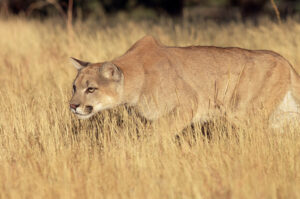Ancient Egyptians were definitely snake-charmed — but by which snakes?
The reptiles took on multiple forms in the long-gone culture’s lexicon, from protectors to evil spirits. The archenemy of the sun god Ra was Apophis (or Apep, or Rerek), the serpent god of chaos. But the sun itself, Aten, was surrounded by Uraeus — a depiction of the sovereign goddess Wadjet as a cobra.

Ra, the Egyptian god of the sun, with Aten the sun and Ureas the cobra. Photo: Creative Commons
One research group set out to discover more about ancient Egypt’s actual snake population. Clues slithered out from the forgotten papyrus scroll they opened.
The Brooklyn Papyrus dates to around 660-330 BC, but likely represents a copy of a much older document, The Conversation reported. In it, there’s evidence of 37 distinct snake species. Thirteen of the descriptions are lost to the sands of time, and so are most of the species the document refers to. Far fewer snake species now inhabit Egypt.
Depending on who you ask, there are now 9 or 10 Egyptian snakes. Those include beasts like the painted saw-scaled viper and the Egyptian carpet viper.
But which of these, if any, correlates to the snakes that fascinated the ancients?
Apophis and the boomslang
To find out, Bangor University’s Elysha McBride used a statistical method called climate niche modeling. Her objective was to explore how the ranges of various African and eastern Mediterranean snakes have shifted over time.
Climate niche modeling works by measuring current climatic conditions in an area, then estimating where else they might have existed in the past. When the model identifies a data set, it can then scan through historical conditions to develop a historical map. This map represents a species’ possible past range.
McBride’s research focused partly on Apophis — because of one distinct feature. According to the papyrus record, the ancient god had four fangs, not two. This sets it apart from most modern-day snakes. Its bite, the papyrus warned, was highly lethal.

Mau, the sacred cat who represented Ra, killing Apophis in ‘The Egyptian Book of the Dead.’ Photo: kairoinfo4u via Flickr
But none of the 10 current Egyptian snakes are four-fanged. So where did Apophis go?
While there’s no way to know for sure, the researchers do have a theory. Their modeling showed the “much more humid” climates of ancient Egypt would have harbored snakes that could never live there today. Opinions over Egypt’s past weather vary widely — but if McBride’s team is right, the kingdom would have readily hosted the boomslang (Disopholidus typus).
A four-fanged species
The snake now lives several hundred miles south of Egypt, in sub-Saharan Africa. Its venom can provoke brain and muscle hemorrhage — and its bite pattern is four-fanged.
The study doesn’t go as far as confirming Apophis was a boomslang. It notes that climate change likely has not affected the Nile Valley uniformly throughout the last 4,200 years. But the study did find patterns of overlap.
More broadly, the study “shows how enlightening it can be when we combine ancient texts with modern technology. Even a fanciful or imprecise ancient description can be highly informative.”
Meanwhile, it’s also unclear what happened to Uraeus, Ra’s sun-loving companion. All of Egypt’s current cobras are nocturnal.





